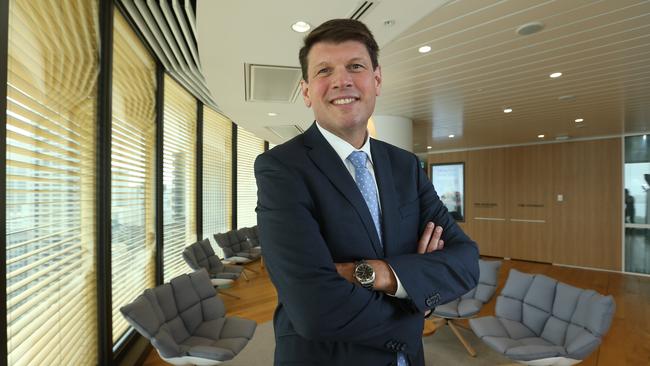AGL plans to split into two by end of 2021
AGL will create separate retailing and generating businesses, as a solar-sparked price rout helps slam the brakes on earnings growth.

AGL Energy will split in two, forming a retail business called New AGL and a generation business called PrimeCo, as a solar-sparked price rout and government intervention slams the brakes on earnings growth.
New AGL will provide electricity, gas, internet and mobile services to 30 per cent of Australian households and plans to be carbon neutral for scope one and two emissions, and plans to target full carbon neutrality.
PrimeCo will be the nation’s largest generator, accounting for 20 per cent of supply in the national electricity market and retaining the nation’s biggest fleet of coal output.
AGL has been reviewing its business model and has hinted at potential changes to its retail and generation arms as declines in wholesale prices pressure its core electricity earnings.
“New AGL would have a strong, stable and growing customer base, delivering electricity, gas, internet and mobile services to more than 30 per cent of Australian households,” AGL chief executive Brett Redman said.
“PrimeCo’s first focus would be the safe and reliable running of its generation portfolio. As the low-cost backbone of the NEM it would be well positioned from day one to support the Australian economy as the energy market continues to evolve.
“PrimeCo’s strong base generation position brings with it a capacity to invest in development options including the transformation of existing generation sites into the energy hubs of the future, as well as development of its 1,600 MW wind development pipeline.”
analysis.
Investors have been questioning whether AGL would opt for a split amid pressure to reduce its carbon emissions and gain a re-rating as a greener energy operator.
The utility is being battered by a storm of low wholesale electricity prices as cheap renewables continue to flood onto the market, while moves by both state and federal governments to underwrite new generation has also contributed to a tough outlook for the company.
AGL has launched a mobile phone division as it seeks to broaden revenue sources amid a crunch on its mainstay electricity business, some 18 months after Mr Redman walked away from a $3bn takeover of telco Vocus, which is now in the crosshairs of a higher bid from Macquarie Infrastructure and Real Assets.
AGL reaffirmed full-year guidance of $500m-$580m and issued guidance for 2021 underlying earnings of between $1.585bn and $1.845bn, compared with consensus of $1.756bn.
It’s also targeting $150m of cost cuts by the 2022 financial year and said programs are underway to deliver a $100m reduction in sustaining capital expenditure by the 2023 financial year.
It’s increasingly shifting its investment focus to clean energy despite owning some of the nation’s largest coal plants in Liddell and Bayswater in NSW’s Hunter Valley and Loy Yang A in Victoria’s Latrobe Valley.
It has laid out a 850MW battery storage target by 2024 including plans to build a 250MW battery at South Australia’s Torrens Island to back up the state’s wind and solar supplies.



